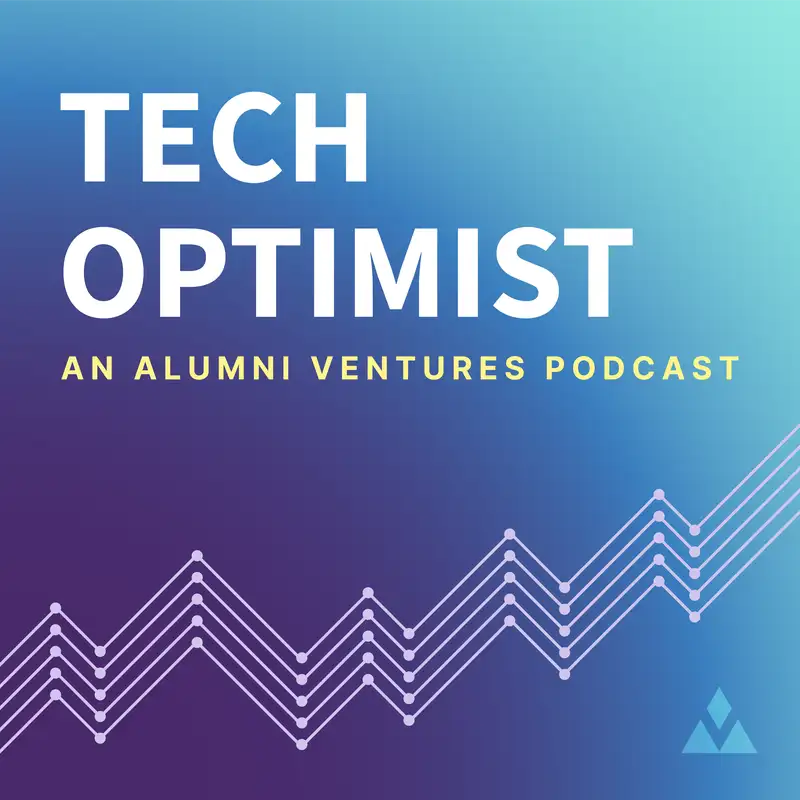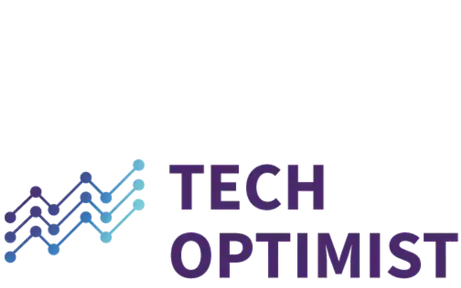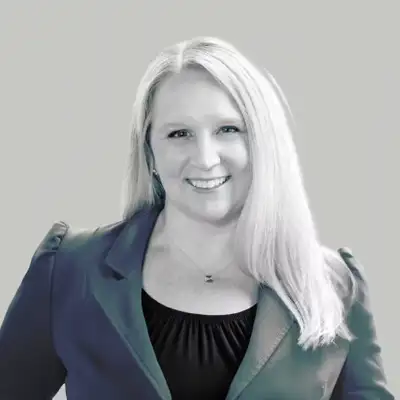#30 - Meet the Startup Revolutionizing Road Safety with Radar Tech
Sam:
Welcome back to this episode. My name is Sam, the footnote writer and organizer for this show. And today, Mike and his guest are talking about Battlestar Galactica, drones, and radar systems. Welcome back.
Nathan Mintz:
And we build software for automotive radar that improves its resolution and thereby its reliability for your car safety systems and stuff.
Mike Collins:
If we are going to maintain America as a strong voice of Western democracy, that there are strategic areas that we cannot afford not to be a leader in.
Sam:
In a world captivated by criticism, it's easy to overlook the groundbreaking technologies shaping our future. Let's shine a light on innovators who are propelling us forward. As the most active venture capital firm in the US, we have an exceptional view of tech's real world impact. Join us as we explore, celebrate, and contribute to the stories of those creating tomorrow.
Welcome to The Tech Optimist. As a reminder, The Tech Optimist podcast is for the informational purposes only. It is not personalized advice, and it's not an offer to buy or sell securities. For additional important details, please see the text description accompanying this episode.
Nathan Mintz:
So you're at your house in New Hampshire, is that what I understood?
Mike Collins:
We're located in Manchester, New Hampshire, correct. Our corporate offices are in an old mill building. Classic New England, old mill town, next door neighbor to Dean Kamen of Segway fame. Yeah, it's great to see these mills being recycled. So a lot of character, a lot of history. Where does this find you today?
Nathan Mintz:
I'm in Redondo Beach, California.
Mike Collins:
Yeah. Fantastic.
Nathan Mintz:
About a stone's throw away from Gundo, as the kids are calling it.
Mike Collins:
Yes. Yeah, we're on opposite ends of the coast here. So pleased to be joined by Nathan Mintz today. Nathan, really fascinating background, serial entrepreneur, areas that you're really known for. Why don't you give folks just a little flavor of your career and areas of expertise?
Nathan Mintz:
Yeah. Well, thanks for the introduction, Mike, and thanks for having me on here. I'm excited to have AVG as a partner as we built my second company, Spartan. So I've spent about the last 20 years of my career, since graduating from Stanford... I was a material science engineering major for both undergraduate and graduate there. Graduated in about 2005, and after that I went into big aerospace, Raytheon and Boeing. I worked on numerous space programs. I was a payload systems engineer and I was also a radar and electronic warfare systems engineer. I used to fly around in a test plane and test various sensors of various types. Some of what I would have done-
Mike Collins:
That sounds super cool to me, by the way.
Nathan Mintz:
Yeah. The test plane was the ugliest plane at LAX. It was 727 with an F18 nose. And I remember I'm sitting there with my headsets, we had a Cray supercomputer on at the time because this is a few years ago, and you hear, "Hey, Voodoo One," that was the call sign, "What are you anyway? You're the ugliest plane I've ever seen. Over." And, "Yeah, we can't tell you what we're doing." But it was a mobile test plan. So I did that for about 15 years. I worked on weapons programs, communication programs, all sorts of stuff.
Went into business development and they used to bring me in to work corporate strategy at Boeing. And we actually won a couple of satellite programs when I was there, about $10 billion in business. And then from there, I'd always been in touch with my friends from Stanford who were in the valley and doing some really exciting things. And one day I got a call from an old friend, Joe Lonsdale, from college-
Sam:
Joe Lonsdale is an entrepreneur investor. He's a managing partner at 8VC, a US-based venture capital firm that manages several billion in committed capital.
Nathan Mintz:
... who said, "Hey, we're interested in starting a defense vertical. Do you have any ideas?" And that day I was watching television and I'm seeing drones shutting down the airport at Gatwick in London. I go, "What's going on here?" And I go, do some digging, and it finds out that we have 200 systems to go try and... What's called counter-UAS systems or counter drone systems. And 90% of them are some lousy jammer that somebody built in their garage and they all suck.
And there was one system that seemed to work well, and it was an EMP system, electromagnetic pulse, where you fry the drone's electronics, but it was enormous. It was $25 million and half the size of my house. And I go, "That's just not practical tactically." But from what I knew about what it needed to do that, it got me thinking.
And I said, "Wait, you could get there with solid state phased arrays with gallium nitride, with newer advanced semiconductor materials." And I went and did the math, and then I brought in Dr. Bo Marr, who's my co-founder at Epirus, and we said, "Well, how do we prove this? With what we know in our heads, we could go to jail if we try and do this outside," because some of these things were classified. So we went and bought a bunch of drones at Walmart and experimented on them, and we just took covers off and saw where voltages could change and stuff.
Sam:
Yeah, very Silicon Valley. Yeah.
Nathan Mintz:
Yeah. And based on that, we went to Joe. And my first meeting with Joe, I walk in with the pitch deck and explain, "We have a system to basically fry any piece of electronics at scale. It'll close with commercial technology." And Joe said, "Okay. Well, I'll give you $3 million." And I said, "Excuse me?" And he said, "Yeah. Go call Judy, your wife," known him a long time, "And tell her you're going to be CEO of this new company. What was it called again? Oh yeah, Epirus." "Oh, really? Okay." So it's in media res, the hero comes in the middle of the story, surprise moment.
And from there, I spent the next two years building Epirus. We took it from three guys at rented desks in what was actually, I think, a yoga mat office in El Segundo, to a 20,000 square foot facility in Hawthorne, with big chambers and everything. We got our first minimum viable prototype done and out and demonstrated for the Air Force, brought in a couple million in contracts. And then COVID had hit, I just had a baby, so we transitioned to a professional operator in DC, and I've been involved along the way ever since as an advisor.
But the company's now a defense unicorn. I think they raised 300 million at one point, 3 billion at the last evaluation. And they have multiple systems in the Army's hand, they won a 70 million contract, et cetera. So it's going. 200 people. I know the CEO very well, used to be a boss of mine at Raytheon, Andy Lowery. And it's really groundbreaking technology. So that was the first company.
The second company, which I'm proud to say is part of the AVG portfolio, is called Spartan. And we build software for automotive radar that improves its resolution and thereby it's reliability for your car safety systems and stuff. And then we also take some of that software and we instantiate it in our own hardware, called Hoplo, which we sell for commercial vehicles, for trailers on trucks. We actually have a partnership with one of the largest trailer outfitters there is, called Phillips Industries, to put those in the back of trailers. And we do heavy equipment, big Caterpillars we can put them on. And we have 11 different distributors on three continents, and we're shipping hundreds of radars right now. So Spartan's in Los Alamitos. I stepped down as CEO about a year ago. The current CEO is my co-founder, Blake Gasca, who just took over recently.
And the company's really... The automotive markets had a couple of bumps along the way. So we've been really doubling down and focusing more on commercial vehicles and how we sell into those fleets and heavy equipment. We're doing demonstrations with Walmart and Home Depot on forklifts because it turns out that they hit a lot of people because you're carrying some big load and it's obscuring the driver's vision and that sort of thing. So the company's raised about 46 million today, series B company, and we're just really excited and love having AVG involved.
Sam:
On Spartan's website, they have a really nicely done video called Spartan Software Solutions, which has a lot of really cool graphics and animations on helping people understand what their technology is. And I wanted to share it, so here is that video, it's about two minutes long. And then we're going to hop into a quick break, and then after that we'll get right back into the interview.
Speaker 4:
The mobility space has a problem. There are tens of millions of vehicles already on the road with sensor perception systems that fall short, especially when it comes to vulnerable road users. When pedestrians and cyclists outnumber cars, the challenges multiply.
Crack the code and you not only save lives, you accelerate the world's mobility. Spartan hasn't just cracked the code, our software leapfrogs the traditional, time intensive, and expensive roadmap, finally unleashing the power of automated mobility.
Built by engineers with decades of experience in aerospace and defense, Spartan software supercharges existing sensor platforms. This cost-effective approach delivers the resolution and response time necessary to achieve the highest level of performance in all conditions.
Sensor platforms powered by Spartan's ever-evolving software currently deliver consistent performance with five times improvement in resolution, and reporting hazards within 75 milliseconds. This software nests easily on your FPG, ECU, or central computer, turning your sensor stack into an application platform that unlocks adaptive and context aware resource management.
Spartan software consistently delivers higher performance on commodity sensors and lower cost on any platform, future-proofing performance through over-the-air updates. Today, Spartan works with some of the top mobility technology providers and vehicle manufacturers, who've seen the Spartan difference with their own data sets.
Want Spartan results with your mobility solution? Our software seamlessly embeds with your existing development process, adding frictionless optimization to your hardware. Realize the promise of automated mobility today with Spartan.
Matt Caspari:
Hey everyone, just taking a quick break so I can tell you about the Deep Tech Fund from Alumni Ventures. AV is one of the only VC firms focused on making venture capital accessible to individual investors like you. In fact, AV is one of the most active and best performing VCs in the US, and we co-invest alongside renowned lead investors.
With our Deep Tech Fund, you'll have the opportunity to invest in innovative solutions to major technical and scientific challenges, which can have a hugely positive effect on society; companies that have the potential to redefine industries and create a more sustainable future and deliver significant financial returns. So if you're interested, visit us at av.vc/funds/deeptech. Now back to the show.
Mike Collins:
So I want to ask you a little bit... I mean, you have a very interesting perspective. And a lot of us, just from afar, have been just observing things going on in Ukraine, in the Middle East, and it seems that we're at a different juncture now with technology and warfare, and we see drones being shot down by super expensive systems. And I just wanted to have you weigh in on your perspective of where, as a country, we are with this stuff right now. Are we at another inflection point of new technologies coming? What are the investment opportunities? Is Silicon Valley going to play more in this next phase of innovation and defense stuff? What do you think?
Nathan Mintz:
Well, there was an article recently in, I think, Defense One, that said Silicon Valley is the new defense industrial base. And the reason is, is that we are truly at one of those inflection points in terms of how we acquire materiel with which to make war. And what we've seen happening since the early '90s, and I'll just parse this into a couple of different megatrends that have been going on, one is the erosion of defense specific electronics in favor of commercial parts.
So you see that with... It's just a microcosm of what we've seen with the mega consolidation in semiconductors, where pretty much everything goes through TSMC now. The name of the Chinese equivalent, you probably know it, but I can't remember off the top of my head. Or GlobalFoundries or whatever. So we've seen this mega consolidation in foundries, and you've seen that across the entire electronic component space. So it used to be that the defense industrial base could build its own custom stuff, and that's becoming increasingly harder and harder for them to do. That's one trend that you've seen.
Conversely, on the other side, we've seen a massive consolidation in defense contractors that peaked around 2018, 2019, 2020. Where we went from 50 defense contractors, we had 6 that could build missiles, we had 8 that could build rockets, all these other things, down to 6, really. You had Boeing, Raytheon, L3Harris, GD, Lockheed, and Northrop. Hey, I got them all on the first try. And there's a couple of secondary ones like Leidos and Mercury and General Atomics that have been lurking in the background. And Leidos used to be SAIC.
But what we've now seen is that people realize that that was bad. That actually stifled competition, that it really stifled innovation. And all those companies became entirely dependent on the government for their R&D, so they moved to cost plus contracts, et cetera. And in the process of doing this, they became married to a number of Battlestar Galactica programs that resulted in these massive platforms that just can't iterate fast enough in terms of their development, their software, et cetera, compared to what we're seeing on the battlefield.
And so what we saw happen in Israel, where we had 300 drones and ballistic missiles and everything fly from Iran this last couple of weeks, is just a microcosm for what we're going to see in warfare. We're transitioning away from these massive Battlestar Galactica platforms that cost $500 million or a billion dollars a piece for intelligence, surveillance, reconnaissance, which were a product of what was called the second offset strategy in the '80s, right? It was called Project Linebreaker. Some of your listeners probably know Will Perry from his time in Silicon Valley.
Sam:
A little bit more on the second offset strategy implemented by the US in the '70s and '80s here that Nathan is talking about. So this one comes a bit of a personal note. My dad was in the Air Force, so come from a military family. So I'm a little bit interested in this one personally, so I figured I would share what I find.
The second offset was a strategic approach developed by the United States during the Cold War to counter the Soviet Union's growing conventional military superiority. And some key points about it, it emerged in the 1970s and '80s when the Soviet Union had achieved nuclear parity and maintained a significant numerical advantage in conventional forces.
The goal of the whole thing was to deter Soviet aggression without matching their numbers in tanks, troops, jets, and ships. So how they approached this, mainly they developed smaller numbers of extremely capable, high quality equipment, leap ahead technologies, and associated operational concepts. It spanned multiple presidencies here in the US. It spanned through Nixon, Ford, Carter, and the Reagan administrations, and it took about 20 years to fully develop and implement.
So some of the key technologies here that Nathan touched on a little is position targeting, stealth technology, advanced sensors and communication systems, and improved battlefield awareness. All right, let's hop back in.
Nathan Mintz:
And that was really the paradigm of network-centric warfare and standoff systems. And it was all designed around defending Germany in the Fulda Gap in the Cold War. And then that was pivoted to the Gulf War where we managed to just absolutely crush them, right? And so the enemy saw that, and they get a brain and a vote too, and so they decided, okay, we're going to decentralize, we're going to go to asymmetric systems. We saw a sneak preview of what's happening now during the war on terror, where we had IEDs that somebody built in their basement that were taking out multimillion dollar vehicles with just an artillery shell that was hooked up to a telephone or something like that.
And so now, with the introduction of autonomous systems and low cost, software defined radios, and all these other factors, it's so much easier to be part of this networked battle space. And so the barriers to entry for non-state actors or even poor state actors to actually offset some of our advantages have been significantly lowered.
And the defense acquisition base has not adapted to that. The big six are still very much married to these large, fifth generation platforms, like the F-35 and stuff. And in the wars that we're fighting in the future, particularly through proxies and what have you, what's happening in Ukraine and what we're doing with [inaudible 00:19:21], that just doesn't work anymore. And the enemy knows if they go toe to toe to us in an air-to-air battle scenario, we're going to win. So they're using their vote and they're going where we at least expect it. And so what we're seeing is this transition away from maneuver and highly network-centric intelligence and surveillance, reconnaissance focus, guided weapons, et cetera, towards attritable mass, towards, "I'm going to throw 1,000 drones at you." Or-
Sam:
Just general military warfare terminology that Nathan and Mike are talking about here. I'm going to help and provide a little bit more context into the topic that they're talking about. So when Nathan is talking about Battlestar Galactica type warfare that you can see in the military, this has generally talked about some lessons that militaries can learn from Battlestar Galactica. So it shows dangers of networked systems, it emphasizes the importance of low tech alternatives, the compartmentalization of systems, adaptability in warfare as skepticism towards revolutionary technologies. And so he's using that phrase to describe the classical mindset of some of these military powers when you think about warfare.
And then he's bringing in the new concept of more modern military technologies, which use by proxy technology. So a way that I can help describe what by proxy means, or just in general, is I can refer it to a different example, one that I use every day. So when I'm editing high resolution videos here in Premier Pro, as a video editor and as a producer, I use proxies as well when the footage is too high resolution and bit rate for my PC and my computer to handle. So it makes the system all laggy and super slow and juddery. Where there're duplicate files of the original footage, smaller in size, with a lower bit rate than the source footage. So it makes editing faster and more efficient. And then when you go to export, it exports the full resolution video.
And now, generally understanding what a proxy is in a different context, but same-ish vibe and usage, this is where the drones come back in, that he's talking about. So it minimizes the use of human life risk, and they're just drones. So a lot of drone warfare seems to be coming up in new, modern technology, and hopefully saving lives and utilizing the technology around us to get across what may be needed at the time.
Nathan Mintz:
... 1,000 remote control buggies-
Mike Collins:
And they're all made, like you said, in a garage for 500 bucks or 1,000 bucks.
Nathan Mintz:
Exactly, exactly. And so that's going to be what we're going to see more of in the future. We need to respond and we also need to realize that our platforms are vulnerable to this because we have magazine depth issues. Some of the destroyers we had off the coast of Israel in this last conflict, they exhausted 3/4 of their magazine. If another round of missiles would've come in, who knows if we would've been able to stop them?
And so we have to change to a different paradigm along with this. This means on the one hand, it's directed energy weapons, like what we're seeing at Epirus. So on the other hand, it's taking the $500 million platform and replacing it with 1,000 $1,500 platforms. And the legacy contractors are going to have antibodies towards that because they have spent hundreds of billions of dollars [inaudible 00:23:18]-
Mike Collins:
And they have the overhead. This is classic Clayton Christensen disruption stuff going on, right? And they are not going to get it. And so what do you see as the role of Silicon Valley? And I speak of that just generically. Obviously Silicon Valley is now everywhere. But this whole entrepreneurial ecosystem, is it ready, is it prepared? Is it welcome to be part of the solution to help the country get across this inflection point? What are your thoughts there?
Nathan Mintz:
There's been a lot of ground that's been broken in the course of my career, and some people that I count as friends or classmates of mine at Stanford paved the way here. Palantir and SpaceX were the first two to break through and break into that. I think it's called a monopsony. It's a cartel, really, is what it is. It's a cartel. So they were the first ones to break in there and figure out how to get these PoRs and break down all these government regulatory barriers that the primes had set up to discourage competition.
And then Anduril came along and they were doing the same thing. SpaceX is very space focused, obviously. Palantir was software focused. Anduril was suddenly putting out hardware solutions. And so Epirus, Shield AI, Capella Space, a number of others have followed behind them and broken the way. And now we're seeing the dam breakout where there's just hundreds of these defense startups. And this is a beautiful thing. I think the DOD has embraced this and realized that, hey, there's some benefit, even if we do have to pay more on the flip side because we have to satisfy commercial profit margins that are interesting. There's some benefit to having private sector with capital at risk, with people who have enormous upside-
Mike Collins:
Competing.
Nathan Mintz:
... doing the R&D for us, right? And some of them are going to fail, but that's okay. That's how innovation happens. And we're seeing people who are doing things that I never would've seen 15 years ago, early in my career. For example, Vannevar Labs, which takes open source intelligence, and Hawkeye 360, they basically just sell the product to a foreign government, and that's how they get around ICARs. I'm not selling you a satellite that does this thing, I'm just selling you the product. And I'm doing that in concert with the US, with the DOD, right? I'm doing it with their consent, with their cooperation.
Outfits like DIU and AFWERX, SOFWERX, all these different labs that are standing up. They provide a lot of opportunities for defense startups to really get in there and get a serious bite at the apple. And you're seeing outfits coming out with $10, $20, $30 million contracts. Some of them are a little bit more established, like Forterra, some of them are brand new, like Saronic, and they're able to get these large contracts. And the DOD is really trying to focus and lean in that direction.
And the traditional contractors are at a major disadvantage towards it because they don't have access to prime talent anymore, they've atrophied on terms of the talent. Their processes and everything are built around let's imagine this thing being manufactured by 100,000 units on day one, and we're going to put the same processes in place that we would have at the end of the story at the beginning of the story, and wonder why it costs so much, right? You're seeing a massive proliferation on the space side. There's all these bus providers and launch providers that weren't there before, and that's wonderful competition. It's driving down costs and increasing quality.
And I think that is the role that Silicon Valley has. It is our nation's innovation engine, and we put venture capital to work to solve really hard problems. And right now, we have a major challenge from China and Russia that we need to answer. And I think there were some political antibodies at first, to people in the Valley, about defense, that have since been overcome. I'm an advisor to several venture capital funds as well as startups. I get calls from people to diligence deals, that I go, "Well, wait, you're looking at a missile company?" Never would have heard that [inaudible 00:27:35] years ago.
Mike Collins:
I think there's been a shift, and I think we've kind of reached a tipping point over the last, I don't know, 12 months or something, where I think this goes from government to the VCs to the entrepreneurs. Where I think there's a sentiment that the world is evolving, and if we are going to maintain America as a strong voice of Western democracy, that there are strategic areas that we cannot afford not to be a leader in. We cannot be making all of our chips a stone throw away from mainland China. We need to be world-class at AI. We need to have our shit together when it comes to space and the next wave of military innovation or our position in the world is going to be eroded.
And we're in a good place. The beauty of America is we have this entrepreneurial engine that has just done amazing things over the last 50 years. And we're in the game in a lot of these areas; energy innovation, health tech, AI, et cetera. But you can't pause and we can't fall behind because if we do, it'll be very dangerous.
And I think people are... Again, from people on the street to people in the valley to people business, like you said, it's like, "Oh, I'm willing to invest in a company that is going to do data gathering or something, but I'm not going to invest in a robotic drone that is going to clear a building in an urban environment anymore."
And I think they've said, "I'd rather send in that drone versus a 20-year-old from Des Moines, Iowa, to clear the building." And that is really the choice now, and I think people have come around to it. And I know we believe in it, and we believe that it's actually very patriotic for us to be leading the way in these things and putting our capital behind entrepreneurs who are, at the end of the day, solving a problem.
Nathan Mintz:
Yeah. No, 100%. I think that there's been a sentiment shift. Because I remember when we started Epirus, there were investors that just outright wouldn't talk to us because in their thesis, that they had agreed to with their limited partners, they could not do defense contracts. And that has completely shifted over time.
And I think one thing that we have to be cautious of is that there is a need for subject matter expertise. People do not understand that the DOD acquisition framework has not changed that much. And so that's why I started writing a Substack, to talk about some of these things and give people the ropes. Because I was worried that I saw a lot of people making investment decisions without knowing about how much strategic patience was required and not seeing fools gold from real gold, and was worried that a couple of bad investments, you get one Theranos, and next thing you know, you blow the airlock on the whole vertical, right?
Mike Collins:
No, you have to educate people. The entrepreneurial ecosystem is power law, right? And it's incredibly powerful, but you have to also stomach failure and iteration and pivots. And that is a different ball game that the venture industry and Silicon Valley, we've learned that game over a long period of time. But again, you're dealing with a very different environment. We have to work together and help educate each other that this is... Let us do what we do well. And we are not the entire system, but to not use American ingenuity, universities, amazing, young, brilliant talents, venture capital, the venture capital legal system, experience base, that would be a tragedy to not bring that together.
Sam:
We'll hop right back into the rest of this interview right after this short break.
Speaker 6:
Do you have a venture capital portfolio of cutting edge startups? Without one, you could be missing out on enormous value creation and a more diversified personal portfolio. Alumni Ventures, ranked a top 20 VC firm by CB Insights, is the leading VC firm for individual investors. Believe in investing in innovation? Visit av.vc/foundation to get started.
Mike Collins:
So last question, Nathan. Again, we have a lot of our listeners are entrepreneurs themselves. Again, you've been through the journey a few times. Any bits of advice that you'd have for an entrepreneur who's maybe just closed their seed round?
Nathan Mintz:
Well, the first piece is that in this environment, capital's expensive, and it's going to take you a lot more... The seed rounds and the pre-seeds, particularly in defense or hard tech, seem to be going pretty easily. If you have a good team that you pull together, and you're doing something that doesn't sound too crazy, or maybe it sounds crazy to conventional people but to the people who invest in crazy stuff, it doesn't sound... You're not defying the laws of physics. After a few weeks of persistence, or a few months, you probably will get funded for the first time.
But the second time, you better hit your milestones. And so you need to be very disciplined and focused on how you're spending your money, particularly on hires. And I've made this mistake a couple of times myself, where you grow too fast and then your burn gets too high and then you need to cut back.
Or the other thing that can happen is if people aren't pulling their weight, you'll hesitate and say, "Oh gosh, what can I do if I don't have that person?" Or, "I don't want to deal with it." And you're better off to just break glass and make the decision. I think the key advantage that a small team has is the ability to go fast. And when you hesitate or worry about, oh gosh, there's second or third order effects from what I'm doing, I don't want to have to clean up the broken glass, just step over it because you're [inaudible 00:35:06] so far down the line.
The Facebook guys talked about moving fast and breaking things, but really failing forward and understanding that as a CEO, half the decisions you're going to make are going to be wrong. And as long as you recognize them quickly and recoup and iterate, on the second or third or fourth time, you're right 90% of the time, you can fix it. So it's being directionally accurate and going in that direction.
So that's the main piece of advices I would give. And just be prepared to take a punch. It's a rough market. And the first fundraise will probably be easy, but the second one, you better have done what you said you'd sign up for or else you're going to have real trouble getting more money in this environment.
Mike Collins:
And I think that is great advice, and I think that has become more true, really, in the last couple of years. Within reason, nothing's easy, but there's definitely money for pre-seed and seed rounds. But that's the easy part because it's just an idea, right? But the capital to get that second round of financing, that A round, where it used to be, I don't know, 75% of our seed deals were able to raise an A. Now that has gotten very hard and very narrow, so you better be in that top 10%, or you better make the money last a lot longer than you thought.
And listen, that constraint can be healthy, right? Because you don't piss away a lot of money, you don't do anything unnecessarily. You focus on the most important thing, whether that's a technical milestone or whether that's a marketplace milestone or whatever it happens to be depending on the business you're in. You better keep that list short and you better meet it, or next opportunity because it is a very discerning market out there for sure.
And I'll reinforce the second point you made too, which is whenever you do a startup, you probably have 10 ideas. There's a thesis and 10 sub-points. You're lucky if five of them are right. And so getting to that truth quickly; here's 10 things, these 4 are right, I'm going to do more of that and then I'm going to try 6 new things. But if you can do that over the matter of weeks and months, which you can do... A small entrepreneurial company is a benevolent dictatorship. This is not you're going to be perfect. This is not everybody's going to love you, there's going to be consensus all the time around the table. At the end of the day, get in a room, hash it out, make a decision, and then go execute it. And then if it's wrong, fix it tomorrow.
This is the biggest delta, for me, between what they taught me at business school and 30 years of experience, which is a fast decision is better than a perfect decision. And the volume of decisions is really important. And just get the data really fast, make up your mind, and then try to make it... Jeff Bezos talks about one-way doors and two-way doors. Most decisions in a startup are two-way doors. So if you got it wrong, fix it, including you pick the wrong VP of marketing or the wrong CFO. If it's wrong, it's wrong. Fix it, move on. You're not doing anybody any favor sticking with a mediocre decision.
Nathan Mintz:
100%.
Mike Collins:
Nathan, super appreciate your time today. Fascinating. Look forward to talking to you again. I think this was really insightful, so thanks for your time today.
Nathan Mintz:
Thank you, Mike. Happy to be on here. And I share some of my insights almost weekly on my Substack. It's called bowoftheseus, so you can check out some more-
Mike Collins:
And I read it. We'll put it in the show notes. And if this is an area that resonates with you, again, really good writing, really good resource, so take advantage of that.
Nathan Mintz:
Thank-you so much. All right, thanks Mike. Happy to be on.
Mike Collins:
Have a good one, Nathan. Nice chatting. Bye.
Nathan Mintz:
Bye.
Sam:
Thanks again for tuning into The Tech Optimist. If you enjoyed this episode, we'd really appreciate it if you'd give us a rating on whichever podcast app you're using. And remember to subscribe to keep up with each episode. The Tech Optimist welcomes any questions, comments, or segment suggestions. So please email is at info@techoptimist.vc with any of those, and be sure to visit our website at av.vc. As always, keep building.








